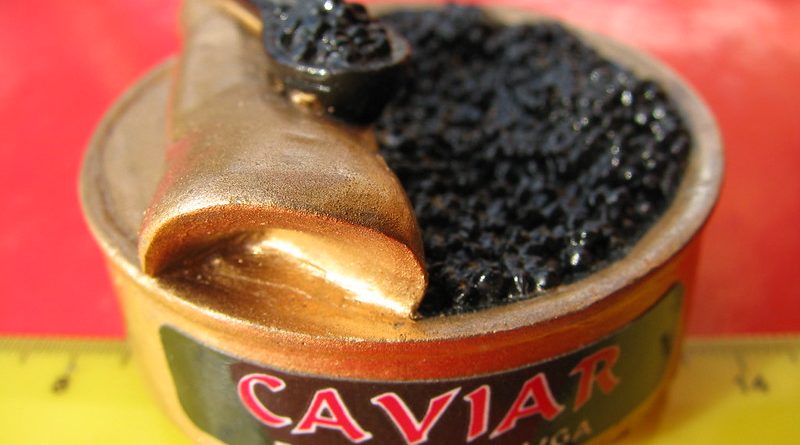Caviar from the Caspian Sea
Food Facts
Where: Caspian Sea, Iran
Tastes: High class fish eggs from a sturgeon roe – a close to endangered fish – rolled in sea salt and eaten raw
Serving Suggestion: Fine caviar should be eaten on unsalted crackers and downed with vodka or champagne
Caviar is renowned the world over as an exquisite dish enjoyed by royalty and those who can afford luxurious dining tastes. The world ‘caviar’ comes from the Turkish havyar, meaning ‘salted fish eggs’ – and that’s exactly what this delicacy is.
Traditionally, real caviar is made only from sturgeon roe, but in the United States ‘caviar’ can refer to processed roe from any fish, be it salmon, cod or sardine, just as long as it’s clearly labelled on the tin. In France, the definition of caviar is much more precise: caviar is roe only from the female sturgeon of the Caspian Sea.
Some of the best caviar in the world comes from the Caspian Sea, but because of its popularity and the high prices punters are prepared to pay, poaching has spiralled out of control and the sturgeon population of the Caspian Sea is under threat. Warmer temperatures and falling sea levels are also endangering the sturgeon spawning grounds, and because the female must be between seven and twenty years old before it begins producing roe (depending on the species) it might not be long before there’s a serious global caviar shortage.
Origins and History
Sturgeon is an ancient fish species. Its skeleton is mostly made up of cartilage and bony plates, and miraculously it hasn’t evolved from its current form since the days when dinosaurs walked the earth.
The Russians have fished for sturgeon since the 13th century and until 1953, when Iran was given the right to fish off the Iranian coast, they monopolised the caviar industry. For centuries the same methods have been used to rate the quality of the caviar and preserve the delicate eggs: they are gently rolled in a large bowl, then salted to keep them fresh for up to three months.
In the 1920s, after the Russian Revolution, caviar was introduced to European society, where it was eagerly embraced by the cocktail quaffing elite. The delicate flavour and pearl-like texture of Caspian caviar have continued to make it a favourite hors d’oeuvre in high society until today.
Serving Suggestion
Fine quality caviar should not be mixed with other ingredients but should be served on dry toast, or perhaps unsalted crackers. Serve chilled, either from a caviar server or a glass bowl inside a larger bowl filled with crushed ice. Don’t use a metal spoon, as this will taint the flavour, but invest in a mother of pearl or bone spoon instead.
A good accompaniment to caviar is frozen vodka, dry champagne or white wine.
Lesser grades of caviar can be served with eggs, fish, salads, cream cheese…in fact, why not get creative with your caviar? Check out the links below for some recipe ideas that will stun your guests.
MORE INFORMATION
Wines.com: Caviar
Great introduction to the elite world of fine caviar, from Mr Caviar himself!
Tsar Nicoulai
Information on the Tsar Nicoulai brand, as well as an introduction to the delicacy.
Iran Online
A window into Iranian culture, with a wealth of facts about the country and chat forum.
Books
Caviar: The Definitive Guide, Susie Boeckmann
(Published September 2000)
By Jess Halliday




